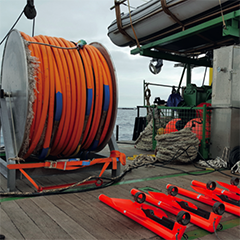The growing importance of sustainable energy is encouraging the wind industry market to aim for larger wind turbines and bigger wind farms. Driven by the search for larger construction areas, the offshore market began to spike investors’ interest. However, it quickly became obvious that this dynamic working environment is associated with new challenges and uncertainties for planners and operators, especially with regard to finding suitable subsoil conditions for safe yet cost-efficient foundations. In order to ensure feasibility, reveal uncertainties, and assess as well as minimize risks, subsoil imaging techniques such as multichannel seismic methods are becoming increasingly important throughout the entire life cycle of a wind farm project and are set to shape market opportunities.
To reach its full potential while striving for a comprehensive subsurface assessment predominantly based on seismic data, in the upcoming years the industry will have to face the challenge of implementing fit-for-purpose seismic methods derived from the oil and gas industry while continuing to remain cost-efficient in a growing market.
How to acquire good seismic data for high-resolution subsurface imaging
A marine seismic survey consists of generating sound pulses and recording echoes from the subsurface close to the surface of the water from different positions. It is then possible to generate an accurate ‘image’ of the subsoil from the travel times and other characteristics of the recorded wavefield. The accuracy, resolution, and penetration of a seismic survey are dependent upon the range of frequencies generated. Higher resolution and accuracy require the use of higher frequencies. Unfortunately, the energy from these higher frequenc





























